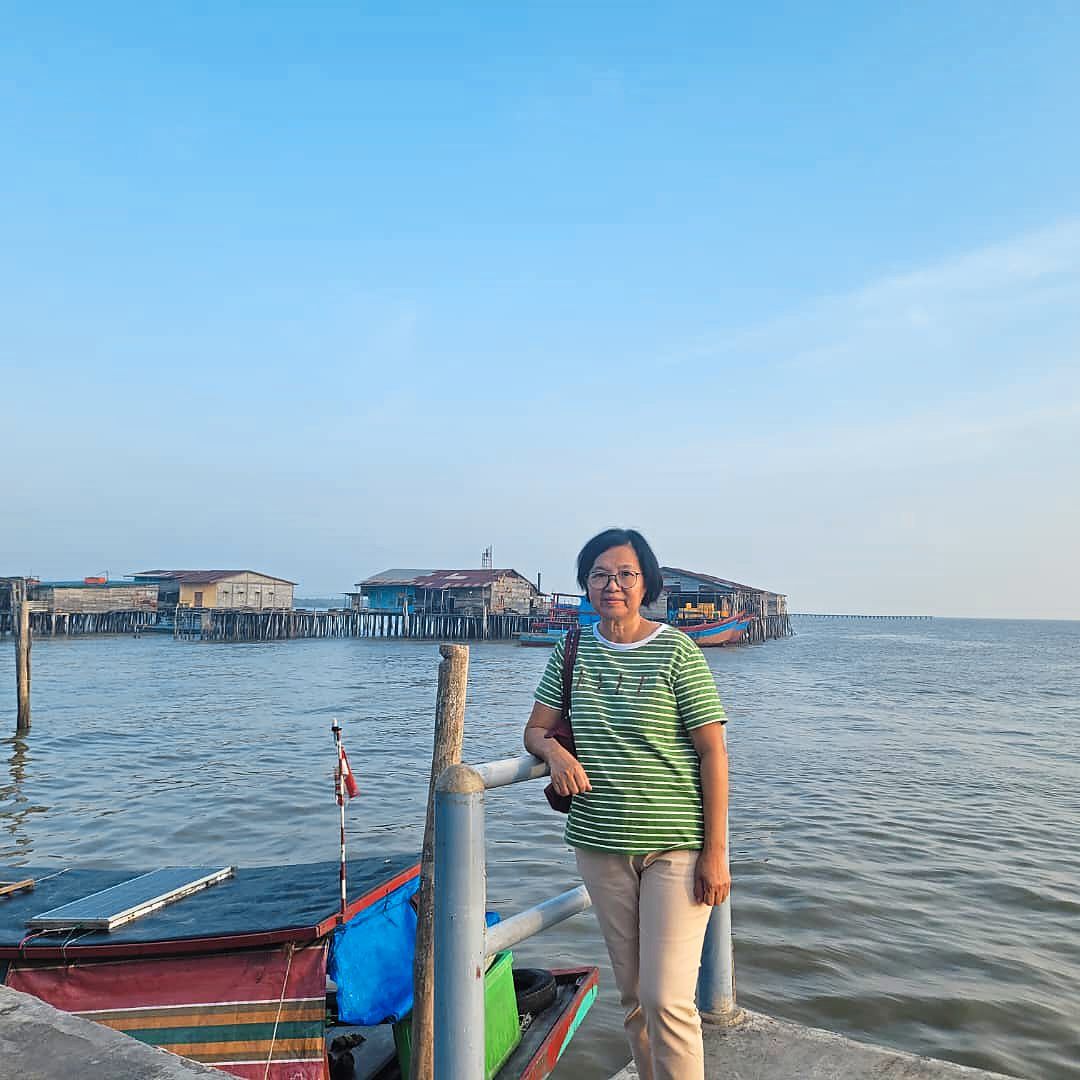Colourful houses on stilts in Panipahan, in the Riau province of Indonesia. Photos: Chan Yee Ai
Do you have any real-life, heart-warming stories to share with readers? We'd love to hear from you. Please keep your story within 900 words. Photos are optional and should be in JPEG format (file size about 1MB, captioned). There is no payment for stories, and we reserve the right to edit all submissions. Email your story to: lifestyle@thestar.com.my with the subject "Heart and Soul".
When I was young, my mother used to tell me that she was from “Lipaham”, Indonesia. Before the age of the Internet, finding information was a tedious process, with only my school atlas as a reference – I just could not find this place on the map.
Last year, I thought about this childhood memory and went on Google to search for the place. It was then that I realised that Lipaham is known as Panipahan, located in the Riau province of Indonesia.
I started talking to some relatives and acquaintances from Panipahan and, after a few months, I managed to track down my maternal uncle from Panipahan and contacted him. He immediately extended an invitation to visit Panipahan.
So, off I went to my mother’s hometown with my 72-year-old aunt and two young relatives. We took an hour-long flight from Kuala Lumpur to Pekanbaru, the capital city of Sumatra. From there, we travelled to Bagansiapiapi, about four hours’ drive along a narrow and bumpy road.
Next, we took a 90-minute boat ride to get to Panipahan. When we arrived, we were so tired but still very eager to meet our relatives. We were warmly welcomed by my uncle and his family.
Panipahan, which is also known as Lipaham in the local Chinese community, has almost half of its area on the seabed. The coast is deeply indented by estuaries. The people’s homes are built on stilts because of the swampy terrain.
The slow, laidback life reminded me of Pulau Ketam near Port Klang, Selangor.
Panipahan is famous for its bird’s nest industry and marine produce.
The next day, we set out to visit more relatives. Led by my 80-year-old uncle, we managed to visit a total of five homes. We drew our family tree, which extended to five generations from both maternal and paternal sides of the family. This was the first time I got to know my maternal great-grandmother’s name and the first time I saw a photo of her. Apparently, she lived to a ripe old age of 95.
We exchanged phone numbers with everyone and took many photos together.
After gathering pieces of information here and there, I learned that post-World War II in 1945, anti-Chinese sentiment was high especially during the National Indonesian Revolution in Panipahan. The Chinese community in Panipahan felt threatened; they were warned that they would be hunted and killed for allegations of supporting the communists. Houses were burnt down and many people were brutally killed by radicals.
In May 1946, groups of Chinese Indonesian were massacred by Independence fighters.
My grandparents, together with their four young children, fled Panipahan on their small fishing boat. Before they left, they prayed at the Ling Yin Kong Temple for protection. They followed the coastline and sailed to wherever the wind took them. Their journey to (then) Malaya was harsh and some villagers did not make it.
After a few days, some villagers landed in either Pulau Ketam, Sasaran or Tanjung Karang, while my grandfather landed in Pasir Penambang in Kuala Selangor.
After the dust had settled, especially after Indonesia achieved independence, some of the villagers returned to Panipahan but my grandmother decided to stay put in Pasir Penambang. Photos of us were sent back to Panipahan but my grandmother never wanted to return as life was better in Malaya. At least they got to eat rice instead of sweet potatoes.
Before we returned to KL, we vowed to visit Panipahan again to meet more relatives and learn more about our family. There is a big festival on the 24th of the 10th month in the Lunar calendar every year. Concerts, also known as ke tai (getai in Malaysia and Singapore) are organised by the temple committee members.
The younger generations, who had left for a better life elsewhere, would return to Paniphan to watch the ke tai and pray at the temple for continued blessings.
We went to the Ling Yin Kong Temple before leaving, to pray and express our gratitude to the deities for their protection over my grandparents more than seven decades ago – the very temple my grandparents last set their foot on before leaving for Malaya.
With that in our mind, our journey back home to KL was filled with mixed feelings. Perhaps we should have done this earlier. But we were happy that this was a journey well worth the effort and time. The thought of my grandparents’ journey was enough to warm the cockles of my heart.








